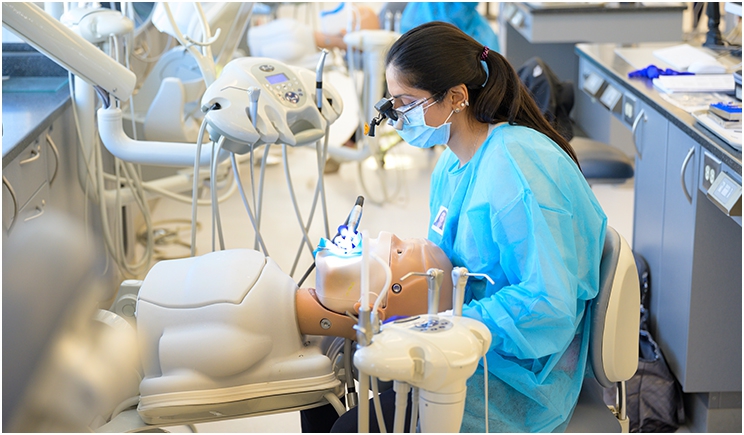
Millions of Americans with toothaches, loose fillings, and sore gums cannot wait to get back to their dentists.
The good news is that by working closely with public health officials, dental offices are finding ways to reopen safely. But between physical distancing requirements, patient backlogs, and other challenges of reopening, it may take a little longer than normal to actually secure an appointment.
Even worse, while the pandemic has certainly pushed some older dentists to accelerate their retirements, many of the dental students set to graduate and replace them have been in pandemic purgatory, unable to treat patients as a necessary part of their final licensure exams.
This seems like an impossible problem to solve. How do you license much-needed dentists during a pandemic when that same pandemic makes it impossible to provide patients for their licensing exams?
We do it how we have addressed other daunting challenges: a combination of ingenuity, technology, collaboration, and a proactive approach from government.
Licensure Exams in a COVID-19 World
In search of a workaround, the University of the Pacific Arthur A. Dugoni School of Dentistry in San Francisco moved quickly.
The school’s leadership worked closely with the Western Regional Examining Board, one of the five examination agencies for dentists and dental hygienists in the United States, to figure out a simulation-based exam that could safely license new dentists without the risks of seeing live patients. It also allowed the test to take place over just one weekend, June 6 through June 8, instead of the usual two, reducing travel.
The Dugoni School’s staff set up this simulated exam by turning its dental clinic operatories into “simulation stations,” removing the headrests on the chairs and installing high-tech (and expensive) dental manikins. This allowed the aspiring dentists to demonstrate proper techniques with the correct instrumentation and ergonomics, allowing the examiners to accurately assess them.
To further ensure safety, the school implemented numerous safety measures, from screening all entrants to designating a one-way flow of traffic through the various rooms, ensuring a safe amount of physical distance between test-takers.
Behind the Scenes
The success of this exam was a triumph of innovation. But more importantly, it is a good example of how cooperation between government agencies and private entities can come up with creative solutions that address real needs while keeping people safe. None of this could have happened without California being willing to change a state regulation around licensure exams.
Our dental school worked with partner organizations with leaders from the California Dental Association, the American Student Dental Association, and other California dental schools to clearly express the urgent need for a modified exam.
And to their credit, the Dental Board of California and California Department of Consumer Affairs moved quickly to approve the non-patient-based. This helped support licensure for the graduating students across the state and ultimately the nation with other state licensing agencies.
Being able to administer this simulated exam immediately helped address the pent-up need for oral healthcare due to the COVID-19 pandemic. The University of Oklahoma College of Dentistry and the Arthur A. Dugoni School of Dentistry were the first two schools in the nation to hold the exam in this format in early June. Other dental schools have since moved ahead with this format to the benefit of graduating students looking to start their careers and the thousands of patients they will serve.
This simulated exam not only allowed us to graduate dentists at a time of need, but perhaps it might even be a model for the future when dental schools will need to not rely on so many human patients in the licensing process. But these innovations are only possible with officials who are willing to innovate and try a different approach.
COVID-19 has forced many of us to adapt to a different way of doing things that now feels normal. One day, a dental student taking her final exam on a manikin might be as commonplace as a meeting on Zoom. But what is most important is to graduate that student so she can be a caring and competent dentist. We cannot let old regulations get in the way of good oral health.
Dr. Nadershahi serves as dean of the Arthur A. Dugoni School of Dentistry. He is actively involved nationally in organized dentistry and dental education through leadership roles at the California Dental Association, ADA, American Dental Education Association, and the Santa Fe Group, among other organizations. His expertise includes leadership development, accreditation, national licensure, and the evolution of oral health education. He previously owned and operated a private general dental practice in San Rafael and San Anselmo, California.
Related Articles
Are Dental Schools Moving Beyond the GV Black Era?
Dugoni Students Take Simulation-Based Licensing Exams
Dental Students Face Greater Rates of Depression











